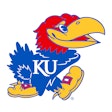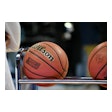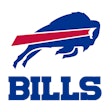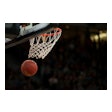Womens' Professional Soccer takes a grassroots approach to growth.
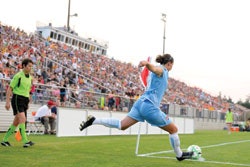 JERSEY GIRLS Yurcak Field, Rutgers University's soccer and lacrosse venue, was home to Sky Blue FC, winner of the inaugural WPS Championship.
JERSEY GIRLS Yurcak Field, Rutgers University's soccer and lacrosse venue, was home to Sky Blue FC, winner of the inaugural WPS Championship.The Women's United Soccer Association, which lasted for three seasons and lost its investors a combined $100 million, did one thing exceptionally well: It gave future league founders a blueprint for how not to succeed. And yet, aside from the obvious-in-retrospect blunders - don't misjudge the market for the sport, don't blow through your five-year, $40 million budget in one year - many of the WUSA's operational strategies were in view as Women's Professional Soccer staged its inaugural season this summer.
To offer three similarities: Although WPS was born on a tight budget, its seven teams played from coast to coast, with three teams in the Washington-Boston corridor, two in the Midwest and two in California. Second, its teams played in a mix of small-college venues (Santa Clara University's Buck Shaw Stadium) and larger facilities (the Home Depot Center). And third, U.S. national team members were divided among its teams partly based on their regional ties, after which an international player draft and a domestic player draft were held to round out the rosters.
And then there were the teams themselves, many of which represented the same regions as the WUSA, including two holdovers from the earlier league (the Boston Breakers and Washington Freedom). Adding to the sense of déjà vu was the news, late this summer, that WPS expansion teams would start play in 2010 in Atlanta and Philadelphia, two more WUSA cities.
Rob Penner, director of communications for WPS, downplays such talk. "WUSA was trying to make a national statement from the beginning," he says. "We've said we're a grassroots league, and that's how we're going to start. That two cities are joining the league in what has been a tough economy is the ultimate sign, I think, that people are confident and excited about the product we have, and the possibilities of growing the franchises."
Major league sports didn't start out as anything major. Teams came and went, tinkering with the rules was a constant, fans and local backers passed the hat, and teams gradually went from amateur to semi-professional to professional. Professional football arguably became truly "major" only with the advent of the Super Bowl 43 years ago, while professional basketball (again, arguably) only began to rival baseball and football with the NBA's adoption of the three-point arc and the dawning of "Magic vs. Bird" in 1979. It is startling to recall that the global phenomenon that is the 30-team NBA had just nine franchises in 1966 and 22 as recently as 1976.
Nowadays, however, expectations are that pro leagues start out as "major." Professional athletes want salaries in line with their professional status (pre-free-agency athletes worked at Safeway in the off-season), owners want franchise values to skyrocket right after launch, and corporate interests demand an immediate ratings and sales bonanza. Resisting this - taking a long-term approach - isn't in the DNA of most league founders and backers.
WPS, like Major League Soccer before it, is opting for slow and steady. "Major league" venues aren't in the business plan - although the Chicago Red Stars franchise is utilizing Toyota Park, the glittering, soccer-only home of the MLS' Chicago Fire, Penner nominates the Anheuser-Busch Center in Fenton, Mo., and the Maryland SoccerPlex as the league's "archetypal WPS stadiums." The two exhibition fields (with 6,000 and 5,126 seats, respectively) anchor soccer complexes, but they're marked improvements over cavernous RFK Stadium (which hosted the WUSA's version of the Freedom) and the modest, 3,000-seat Ralph Korte Stadium (the track and soccer venue at Southern Illinois University-Edwardsville, one of the early WPS home fields).
"We did have a mix of stadiums this year," Penner says. "St. Louis Athletica bounced around between SIU and Herman Stadium at Saint Louis University before getting this fantastic venue at Anheuser-Busch. We loved the stadium so much we had our All-Star Game there - it's a wonderful soccer-only setting." Yurcak Field, the Rutgers University soccer and lacrosse venue that served as the home of Sky Blue FC, winner of the inaugural WPS Championship in August, is another Penner favorite, although he concedes that with all 5,000 seats in one grandstand and a lawn beyond the far sideline, the view on television lacks the atmosphere associated with major events.
Also in shorter supply this time around are "name" players such as Mia Hamm, Brandi Chastain and Julie Foudy, or any of the 20 national team members who captured the public's imagination during the 1999 Women's World Cup and became (in partnership with John Hendricks, founder and CEO of the Discovery Channel) the founders of WUSA. Marta, the one-named Brazilian great, could (once she masters English) be the Los Angeles Sol's answer to David Beckham.
"There's no Mia Hamm, and the truth is, though it might not help in the short run, in the long run it might be the best thing," Penner says. "Players come and go. I learned that in pro tennis, where I worked before coming to WPS. They were lamenting what would happen when the Williams sisters leave. You can't hang it on one player; you need to hang it on the group as a whole. Marta did raise the profile of the league; her away games had attendance that was 15 to 20 percent higher than the league average. People know Hope Solo from the national team, and Abby Wambach's comeback from a broken leg was certainly a story. But you have to grow a league slowly, and that's what we hope to do with our players, as well."
Although most sports fans aren't aware of it, the blueprint for organically grown women's soccer leagues already exists in the form of the W-League, which is administered by the United Soccer Leagues (USL). Known as the United States Interregional Women's League when play began in 1995, the W-League fields 37 franchises in five divisions split between Northeast, Central and Western conferences. Teams can be designated as all amateur or all professional, in keeping with NCAA regulations regarding amateurism. (The league's two professional teams, the Buffalo Flash and FC Indiana, are among its most dominant, as shown by the latter's 11-1-2 record with a 72-10 goal differential in 2009, a record achieved despite losing nine starters to the WPS draft.) They play largely in high school and small-college stadiums - the league requires 1,000 seats and dedicated press facilities, among other things - and primarily within their region, which helps build rivalries and keeps travel costs down.
Penner says a regional approach wouldn't work for WPS. "Certainly there are cost efficiencies in being smaller and regional, but you can't be the number-one league in the world, which was in our mission statement, and be regional," he says. "If you're going to try to be the world's best league, and you're going to bring in the kind of international talent that the owners and commissioner said they were going to go after, you have to have a national footprint, and that means teams on both coasts."
Leagues under the auspices of USL may lack a cohesive national footprint, but their footprints are all over the American landscape, with more than 120 teams competing in the men's First and Second Divisions, the W-League and the Premier Development League. As Melanie Fitzgerald, director of W-League operations, points out, the 25-year-old USL is the poster child for grassroots leagues, having started as a men's indoor league, gradually morphing into an outdoor league and pulling youth and women's teams under the USL umbrella. Even still, after 15 years of play, the W-League barely registers with the wider public, which assumes that women's soccer arrived just after Brandi Chastain stripped off her jersey.
"The W-League was around four years before the 1999 Women's World Cup," Fitzgerald says. "The Cup had a great effect on women's soccer overall, and definitely enhanced our league, from boosting fan interest to letting players realize there were more opportunities beyond just playing in college. After that, a lot of our older players went into the WUSA, and then when it folded, those players came back." You'd never know it, Fitzgerald adds, but the W-League has served as an apprenticeship for some of the national team's younger members.
And, the possibility exists that synergy between WPS and the W-League might one day lead to a promotion-relegation system similar to that of the world's other soccer leagues. Sky Blue FC, in fact, was one of two W-League teams to make the jump to WPS last year after the team's franchise rights were transferred to a group able to meet the requirements of a higher-level league. Also, several WPS teams have aligned with W-League teams - or teams from the also-under-your-radar Women's Professional Soccer League, a second-tier league that started life as the Western Division of the W-League - as affiliated feeder or development teams. "I don't think it's something for the near future," Penner says, "but I will say the commissioner [Tonya Antonucci] has not ruled out, say, five years down the road, going to a system of relegation and promotion with the lower-tier leagues."
The WUSA's business plan assumed average attendance of 6,500, and the league folded even though it achieved this goal. WPS "shot for a 4,000 to 6,000 range in its first year," Penner says, "and we hit that," with its 4,600 average being enough within the range to justify rampant optimism. But the league is swimming upstream, just like all the leagues that came before it. Newspaper accounts this summer placed losses at double the expected deficit for some WPS teams, mainly because of a dearth of local sponsorships. The two issues - fan base and sponsorship base - are, of course, linked. WPS shares with the WUSA a preponderance of families in the stands with soccer-playing daughters, a fairly limited demographic that eventually moves on to college and other post-adolescent pursuits.
"It certainly is a core fan base, obviously a natural fit, but unlike WUSA, we're trying not to speak only to them," Penner says. "We don't have all the numbers in yet, but we did sampling early in the season and we were impressed with some of the diversity we saw among spectators at our games. The most important thing is to grow one fan at a time, and to be able to show in 2010 that we have growth in attendance and in local sponsorships."




















